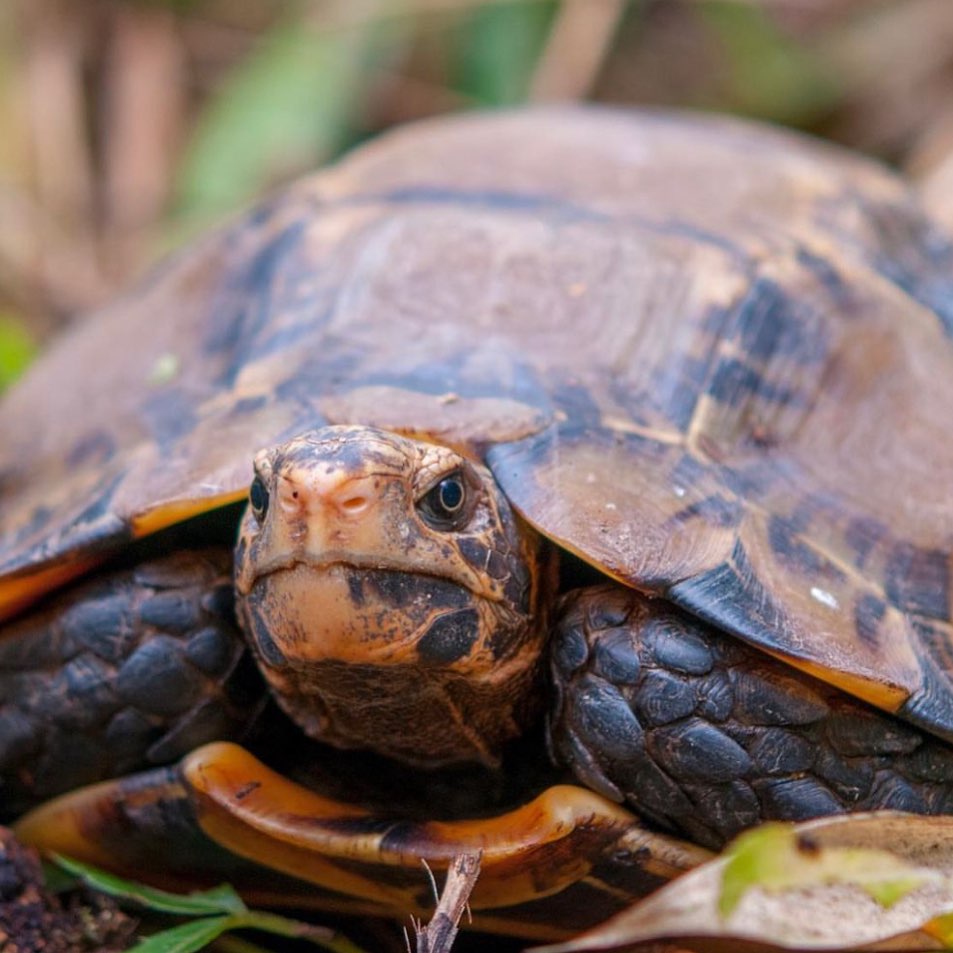- The biology and habitat of the Impressed Tortoise (Manouria impressa)
- The historical lineage and geographical distribution of this tortoise species
- Conservation efforts in wildlife breeding programs
- Comparative analysis with gopher and desert tortoises
- Future challenges and strategies in the conservation of the species
The Impressed Tortoise (Manouria impressa) is an intriguing species, notable for its distinctive shell adorned with intricate patterns that resemble a series of gentle indentations. Living primarily in evergreen and montane forests, this tortoise is native to parts of Southeast Asia, notably Thailand, Myanmar, Laos, Vietnam, and Malaysia. They prefer high-altitude environments, thriving at elevations between 300 and 2,000 meters. These tortoises are primarily herbivorous, consuming a diet that includes fungi, bamboo shoots, fruits like bromeliad berries, and the occasional invertebrate. The peculiar behavior of this species includes its habit of using its strong, sturdy legs to build nests, thereby ensuring a secure site for its eggs, a trait relatively rare amongst tortoises.
This distinctive species belongs to an ancient lineage of Asian tortoises, which traces back to the Miocene epoch. By studying fossil records, scientists have inferred that some members of this lineage migrated to North America millions of years ago. These migrations gave rise to what we now know as gopher and desert tortoises. This ancient connection is particularly fascinating as it highlights the adaptable nature of tortoises and their ability to colonize diverse ecosystems. Their migration from Asia to North America elucidates the evolutionary trajectory, shedding light on how geographical and environmental changes have shaped species distributions.
At our conservation center, we prioritize the breeding of the Impressed Tortoise. Captive breeding is crucial, considering the increasing threats of habitat loss and illegal wildlife trade that put wild populations at risk. Our breeding program aims to maintain genetic diversity and produce healthy individuals that can be reintroduced into their natural habitats. This involves creating environments that mimic their natural habitat, ensuring that these tortoises experience minimal stress and have ample access to their preferred diet.
The Impressed Tortoise shares several physiological and behavioral characteristics with the gopher and desert tortoises, such as robust limbs and a tendency towards herbivory. However, there are marked differences, particularly in habitat preferences and reproductive behaviors. For instance, while the gopher tortoise is known for its burrowing activity in sandy soils of the southeastern United States, the Impressed Tortoise constructs nests amidst forest leaf litter. These comparative studies between related species help conservationists develop better strategies tailored to the unique needs of each species.
The conservation of the Impressed Tortoise faces numerous challenges, primarily due to habitat destruction from logging and agricultural expansion. Additionally, poaching for the pet trade and for use in traditional medicine has significantly impacted populations. Our center collaborates closely with local and international conservation organizations to lobby for stronger legal protections and to conduct public awareness campaigns about the importance of these tortoises. Moreover, habitat restoration projects, which include reforestation and establishing protected areas, are essential for providing secure environments for these animals to thrive.
Looking ahead, developing more refined conservation strategies involving local communities is imperative. Education and community engagement play vital roles in ensuring the long-term success of conservation programs. We can create more sustainable and effective practices by involving local communities in conservation efforts. Monitoring wild populations using advanced technologies such as GPS and remote sensing can also improve our understanding of their movement patterns, habitat use, and general health.
Our conservation center’s work with the Impressed Tortoise is part of a broader global effort to safeguard biodiversity. By protecting species like the Impressed Tortoise and understanding their place in the ecological web, we contribute to the overall health of our planet. Every species plays a crucial role in maintaining their respective ecosystems, and losing one can have cascading effects on many others.
We are dedicated to continuing our research and conservation efforts, ensuring that the Impressed Tortoise and other vulnerable species can persist for future generations. Through collaboration, education, and innovative conservation practices, we strive to meet the challenges posed by human activities and environmental changes. The journey of the Impressed Tortoise from ancient Asia to its present-day habitats exemplifies resilience and adaptability, traits we can draw inspiration from in our conservation endeavors.
*****
Source Description
The Impressed Tortoise (Manouria impressa) is one of the species we breed at our conservation center, but pictured here is a wild animal in Thailand. The species belongs to an ancient lineage of tortoises from Asia, some of which made it to North America millions of years ago to form what are now the gopher and desert tortoises—like the Bolson Tortoise we protect in Mexico!

